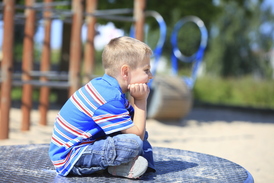Click to edit this placeholder text.
ADVERSE CHILDHOOD EXPERIENCES
Why this research is incredibly important for educators.
.
Over the past few weeks there have been numerous stories published about the economic impact of adverse childhood experiences (ACE). Although the financial reality of this issue is troubling, we have known about the devastating impact of ACEs on children's well being for over a year. Sadly, the word has yet to spread. "The ACE study is probably the most important study you have never heard of," said Marcia Stanton of the Phoenix Children's Hospital and the ACE Consortium.
DEFINITION OF ACE
An adverse childhood experience is trauma that takes place in a child’s life before age 18. An ACE is considered any one of the following:
- Recurrent physical abuse
- Recurrent emotional abuse
- Contact sexual abuse
- Alcohol and/or drug abuse in the household
- An incarcerated household member
- Someone in the household who was depressed, mentally ill, institutionalized or suicidal
- Mother who was treated violently
- One or no parent
- Emotional or physical neglect
The number of “yes” answers yields an ACE score that represents a person’s cumulative exposure to particular adverse conditions in childhood. If a person experienced none of the conditions above in childhood, the ACE score would be zero; an ACE score of nine means that a person was exposed to all of the categories of trauma above.
On March 3, 2014 a report was released that stated that children in Arizona experience more trauma than any other state in the country. Results found 31.1 percent — nearly one-third — of Arizona children have dealt with two or more adverse childhood experiences, significantly higher than the national average of 22.6 percent. Read more here.
THE IMPACT OF ACE ON EDUCATION
Educators know that children that come from more traumatic backgrounds tend to have more behavior and learning issues in school. The research around ACE has given us data that support our assumptions and experiences. The National Survey of Children's Health discovered the following in students between the ages of 12 and 14 with an ACE score of three or more: |
|
 |
- 41% exhibit high externalizing behavior
- 48% exhibit low engagement in school
- 38% have received calls home due to school behavior
- 21% have repeated a grade
- 44% do not stay calm and controlled
- 49% do not finish tasks
- 23% have been diagnosed with a learning disability
Read more about this study.
RECOGNIZING STUDENTS THAT HAVE EXPERIENCED ACE
|
Many children that have experienced three or more ACEs have developed, or are in danger of developing, traumatic stress. Signs of traumatic stress include:
- fear
- anger
- withdrawal
- trouble concentrating
- digestive problems
- nightmares
|
|
 |
A child’s distress may not be obvious or visible. By talking with them, you may discover that they are experiencing traumatic stress:
- They may be re-experiencing the trauma through images, thoughts and feelings.
- They may try to avoid people and places that are traumatic reminders.
- They may seem numb because they are trying to avoid feeling their own feelings. (National Child Traumatic Stress Network)
.
WHAT PRINCIPALS CAN DO
As more is known about ACE and traumatic stress, more attention is being given to current discipline practices and how they may be increasing negative behavior and amplifying traumatic stress in students. The following six principles should guide interactions with students who have experienced trauma: |
|
 |
-
Always Empower, Never Disempower: Avoid battles for power with students. Students who have experienced trauma often seek to control their environment to protect themselves, and their behavior will generally deteriorate when they feel more helpless. Classroom discipline is necessary, but should be done in a way that is respectful, consistent, and non-violent.
-
Provide Unconditional Positive Regard: As consistently caring adults, school staff have the opportunity to help students build trust and form relationships. For example, if a student tells you, “I hate you. You’re mean,” respond with unconditional positive regard by saying “I’m sorry you feel that way. I care about you and hope you’ll get your work done.”
-
Maintain High Expectations: Set and enforce limits in a consistent way. Maintain the same high expectations of a student who has experienced trauma as you do for his/her peers.
-
Check Assumptions, Observe, and Question: Trauma can affect any student and can manifest in many different ways. Realize when you are making assumptions, and, instead, talk with the student and ask questions. Make observations about the student’s behaviors and be fully engaged in listening to his/her response.
-
Be a Relationship Coach: Help students from preschool through high school develop social skills and support positive relationships between children and their caregivers.
-
Provide Guided Opportunities for Helpful Participation: Model, foster, and support ongoing peer “helping” interactions (e.g., peer tutoring, support groups). Source
At the heart of these approaches is the belief that students’ actions are a direct result of their experiences, and when students act out or disengage, the question we should ask is not “what’s wrong with you,” but rather “what happened to you?” By being sensitive to students’ past and current experiences with trauma, educators can break the cycle of trauma, prevent re-traumatization, and engage a child in learning and finding success in school. (Maura McInerney, Esq. Senior Staff Attorney Amy McKlindon, M.S.W.)
Learn more about Trauma-Informed Classrooms & Trauma Informed Schools here.
UPCOMING OPPORTUNITIES
School Leader Design Day
Equity Workshops Facilitated by Calvin Terrell
Inflation Lawsuit Settlement Webinar
|